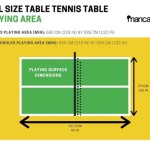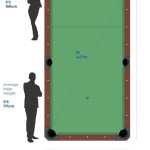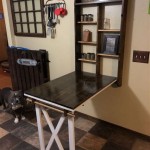Standard Dining Room Table Dimensions: A Comprehensive Guide
Selecting the right dining room table involves considering several factors, including room size, seating capacity, and overall aesthetic. However, understanding standard dining room table dimensions is a crucial starting point. This guide provides a comprehensive overview of typical dimensions, exploring various shapes, sizes, and related considerations to aid in informed decision-making.
Understanding Standard Dining Room Table Heights
The height of a dining room table is a fundamental dimension that significantly impacts comfort and usability. The universally accepted standard height for a dining room table is between 28 and 30 inches (71-76 cm). This height accommodates the majority of dining chairs, allowing adequate legroom and a comfortable reach to the tabletop.
Deviations from this standard height are typically found in specialized furniture, such as counter-height or bar-height tables, which serve distinct purposes. These specialized tables require correspondingly taller chairs or stools. Maintaining the standard height for a dining table ensures compatibility with a wide range of chair styles and promotes ergonomic comfort during meals.
When selecting a dining table, it is important to consider the thickness of the tabletop. A thicker tabletop may slightly reduce the available legroom. Therefore, measuring the distance from the floor to the underside of the tabletop is advisable to ensure ample space for comfortable seating. The ideal clearance should be at least 12 inches between the seat and the tabletop.
Typical Dimensions for Different Table Shapes
Dining room tables come in various shapes, each with its own set of standard dimensions. The shape of the table influences the number of people it can comfortably accommodate and the overall flow of the dining room. Common shapes include rectangular, square, round, and oval, each having its own dimensional guidelines.
Rectangular Dining Tables: Rectangular tables are among the most common choices for dining rooms, offering versatility in terms of seating capacity and placement. These tables are well-suited for both small and large gatherings. Standard dimensions vary depending on the desired seating capacity.
A rectangular table designed to seat 4 people typically measures between 48 and 60 inches (122-152 cm) in length and 36 to 42 inches (91-107 cm) in width. For a table intended to seat 6 people, a length of 60 to 72 inches (152-183 cm) and a width of 36 to 42 inches (91-107 cm) is generally adequate. Tables seating 8 people often range from 72 to 96 inches (183-244 cm) in length, with a width remaining between 36 and 48 inches (91-122 cm). For larger parties, tables seating 10 or more people can exceed 96 inches (244 cm) in length, with widths potentially expanding to 48 inches (122 cm) or more.
Square Dining Tables: Square tables are ideal for smaller spaces or for creating an intimate dining experience. They are typically designed to seat 4 people comfortably. The standard dimensions for a square dining table are approximately 36 to 48 inches (91-122 cm) on each side.
While square tables are generally limited to seating four, larger versions can accommodate more, but they may become less conducive to conversation due to the increased distance between diners. Square tables are well-suited for square-shaped rooms, where they can maintain a balanced and symmetrical aesthetic.
Round Dining Tables: Round tables foster a sense of inclusivity and encourage conversation, as everyone seated around the table can easily see and interact with each other. The diameter of a round table dictates its seating capacity. A round table with a diameter of 36 to 48 inches (91-122 cm) typically seats 4 people. For 6 people, a diameter of 48 to 60 inches (122-152 cm) is recommended. Round tables seating 8 people generally have a diameter of 60 to 72 inches (152-183 cm).
When selecting a round table, it is essential to consider the available space in the dining room. A round table requires sufficient clearance around it to allow for easy movement. Furthermore, round tables can be particularly effective in smaller, square-shaped rooms, where they can soften the angular lines and create a more welcoming atmosphere.
Oval Dining Tables: Oval tables combine the benefits of both rectangular and round tables. They offer the elongated shape of a rectangular table, providing ample space for serving dishes, while also maintaining a curved form that promotes conversation and avoids sharp corners. The dimensions of oval tables are similar to those of rectangular tables, with lengths ranging from 48 to 96 inches (122-244 cm) or more, depending on the desired seating capacity, and widths typically between 36 and 48 inches (91-122 cm).
Oval tables are versatile and can work well in various dining room layouts. They can also be a practical choice for families with young children, as the rounded edges minimize the risk of bumps and bruises. The elongated shape of an oval table can also create a sense of spaciousness in a smaller room.
Considering Space and Seating Capacity
Determining the appropriate dining table dimensions requires careful consideration of both the available space in the dining room and the desired seating capacity. It is crucial to ensure that there is ample room around the table for comfortable movement and that the table can comfortably accommodate the intended number of diners.
As a general guideline, allow at least 36 inches (91 cm) of space between the edge of the table and any walls or other furniture. This clearance allows individuals to easily pull out their chairs and move around the table without obstruction. In tighter spaces, a minimum of 30 inches (76 cm) may be acceptable, but it is essential to prioritize comfortable movement whenever possible.
When calculating the seating capacity of a dining table, it's important to consider the width of the chairs and the personal space requirements of each diner. A standard dining chair typically occupies between 18 and 24 inches (46-61 cm) of width. Therefore, allocating at least 24 inches (61 cm) of width per person is recommended to ensure a comfortable dining experience. For more formal settings, increasing this allocation to 30 inches (76 cm) per person may be preferable.
In addition to the width of the chairs, it is also important to consider the legroom required for each diner. A depth of at least 18 inches (46 cm) of legroom beneath the table is recommended to allow for comfortable seating. This depth should be measured from the edge of the tabletop to the table legs or support structure. If the table has a central pedestal base, it may provide greater legroom than a table with four corner legs.
To accurately assess the space requirements for a dining table, it is helpful to create a floor plan of the dining room. This plan can be drawn to scale on paper or created using online design software. The floor plan should include all existing furniture and architectural features, such as doorways, windows, and built-in cabinets. By placing the proposed dimensions of the dining table onto the floor plan, it is possible to visualize the layout and identify any potential constraints or issues before making a purchase.
Expandable dining tables offer a flexible solution for homeowners who occasionally need to accommodate larger gatherings. These tables typically feature leaves or extensions that can be added to increase the table's length. When not in use, the leaves can be stored separately, allowing the table to remain compact for everyday use. Expandable tables are available in various shapes and sizes, making them a versatile option for dining rooms with limited space.
The shape of the dining room can also influence the choice of table shape and dimensions. In long, narrow rooms, a rectangular or oval table may be the most suitable option, as it can effectively utilize the available space. In square rooms, a square or round table can create a more balanced and harmonious aesthetic. Irregularly shaped rooms may require more creative solutions, such as custom-designed tables or unconventional layouts.
Ultimately, selecting the right dining room table dimensions is a matter of balancing practical considerations with personal preferences. By carefully assessing the available space, determining the desired seating capacity, and understanding the standard dimensions for different table shapes, individuals can make informed decisions and create a dining space that is both functional and aesthetically pleasing.
The material of the table also plays a role, but not directly in the dimensions. Heavier materials like solid wood may require more robust support structures, potentially affecting legroom slightly. Lighter materials like glass or engineered wood might allow for more streamlined designs.
Consider the overall style of the room. A formal dining room might call for a larger, more imposing table, while a casual dining area might be better suited to a smaller, more relaxed design. The table should complement the existing decor and reflect the homeowner's personal style.

A Guide To Choosing The Ideal Dining Table Width

What Is The Ideal Dining Table And Chair Height

Pin By Oana Tiution On Dinning Room Dining Table Sizes 12 Person 6 Seater

20 Dining Room Design Ideas Tavolo Tondo In Resina Arredamento

A Guide To Choosing The Ideal Dining Table Width

What Is The Ideal Dining Table And Chair Height

5 Piece Dining Table Set Industrial Wooden Kitchen And 4 Upholstered Chairs For Modern Standard Counter Height Space Saving Dinette Room Restaurant Gray Com

Dining Table Guide Size Shape Seating Sizes Round

Dining Table And Chair Measurement Guide Standard Size Shape For 2 4 6 8 10

Dining Table Design Basics Tablelegs Com
Related Posts








